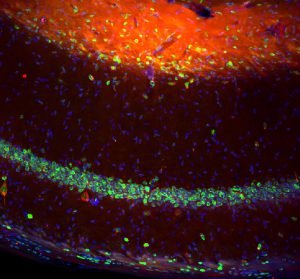
The Pearce laboratory studies the suppression of memory by general anesthetics, with a particular focus on GABAA receptors and synaptic inhibition in the hippocampus. We employ a variety of methods, including brain slice electrophysiology, behavioral pharmacology, and optical recordings in awake behaving mice. Using genetically modified mice, we are exploring the roles of various types of interneurons in the hippocampus in controlling the formation of long-term memories. In addition to discovering mechanisms of anesthesia, our research addresses basic mechanisms of learning and memory, in health and disease.
More Info
![]()
Robert A. Pearce, PhD
Professor
Department of Anesthesiology
University of Wisconsin
(608) 263-0208